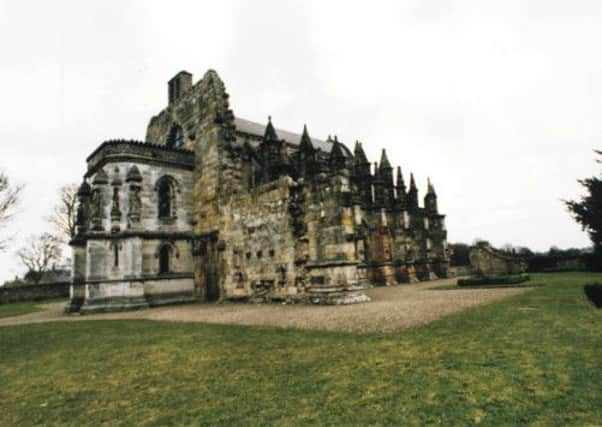Rosslyn Chapel refurbishment nearing completion


The last scaffolding will be removed from Rosslyn Chapel, the medieval masterpiece in Midlothian made world famous by the Da Vinci Code book and film, in the summer.
Bosses have pledged that visitors will finally be able to enjoy a “clear and uninterrupted view of the chapel” by August when the last work on its priceless stained-glass windows is over.
Advertisement
Hide AdThe trust responsible for the 15th-century building – which is renowned for its intricate carvings, chequered history and many legends – was covered by a protective canopy for years to protect its fragile fabric from the elements.
It was then at the centre of the most intensive conservation project of its kind in Scotland, both to restore the building and create a major visitor centre to accommodate the vast crowds who flock to the previously little-known attraction.
The lengthy programme of repairs and renovation, costing around £10 million, coincided with a huge increase in the popularity of the attraction after the release of Dan Brown’s best-seller, and the subsequent Hollywood film.
Although the bulk of the restoration work was finished almost three years ago, the final elements of the revamp have been delayed by regular bouts of poor weather. The last phase, involving a detailed examination of the stonework and subsequent repairs, is expected to be completed in the next few weeks. The last scaffolding is expected to come down in July or August.
Although the protective covering was put over the chapel in 1997, it was not until 2004 that the first substantial repairs were carried out, just as Da Vinci Code fever was mounting on the back of the book’s initial release.
Much of the project involved trying to reverse earlier conservation work, carried out in the 1950s, which actually led to the building suffering damp problems, with water found to be running down the walls and a mouldy-green asphalt roof. The erection of the canopy was to allow it to dry out properly.
Advertisement
Hide AdRosslyn Chapel had been attracting steady visitor numbers of around 30,000 a year until then, but that number had doubled by 2005, and reached a peak of 176,000 in 2007, after the big-screen film starring Tom Hanks and Audrey Tautou was released.
Although numbers have slightly tailed off since then, the average in recent years has still been around 130,000.
Advertisement
Hide AdIan Gardner, director of the Rosslyn Chapel Trust, which runs and maintains the attraction on behalf of its owner, the Earl of Rosslyn, told The Scotsman that a “systematic” examination of the building’s stonework had been carried out over the last three years and that it was now hoped to keep the building clear of scaffolding for as long as possible.
“It’s very exciting for us that people will finally be able to appreciate the chapel properly.
“The canopy was on the building for a long time, but even since it came down, the chapel has never been entirely clear of scaffolding and, although the bulk of it will be down in the next few weeks, there will still be some up while work on the windows is on-going,” he said.
“It’s a different place here now with the new visitor centre, which means things are more spread out on the site, even though we have many more visitors than in 1997.”
Building still a magnet for those seeking the Holy Grail
ROSSLYN Chapel has long been a magnet for symbologists, Freemasons, Holy Grail hunters, pagans and architectural historians.
It was founded in 1446 by nobleman William St Clair, the third Prince of Orkney, who commissioned the best stonemasons of the day to decorate the interior with religious, Masonic and pagan symbols.
Advertisement
Hide AdLegends grew of links with the Knights Templar and that the chapel was the last resting place of the Holy Grail, with its whereabouts reputed to be concealed in the chapel’s coded symbols.
Over the centuries, it attracted the great and the good, including Sir Walter Scott, Robert Burns and even Queen Victoria, who was so taken by its pinnacled glory that she insisted it should be preserved for the nation.
Advertisement
Hide AdAt the Reformation, the chapel was closed for public worship and the Sinclair family was forced to break down the altars and discard the carved saints of the old Catholic faith.
It was not until 1861 that Rosslyn Chapel opened again for public worship, this time in the Scottish Episcopal tradition. The Da Vinci Code revived speculation the key to the Holy Grail may be found there.